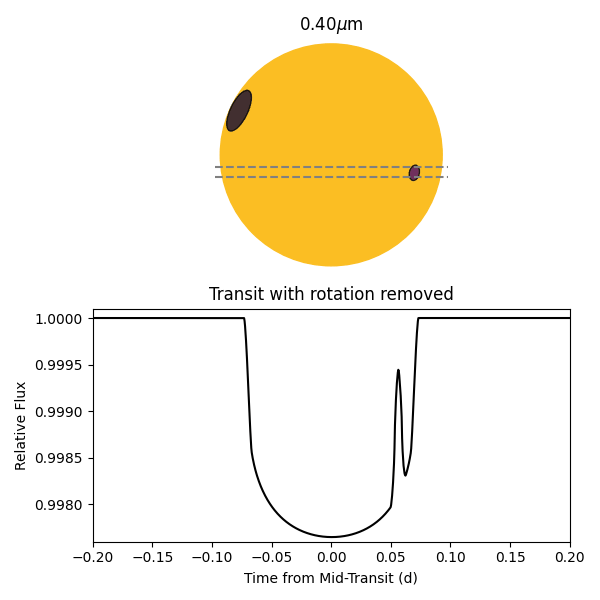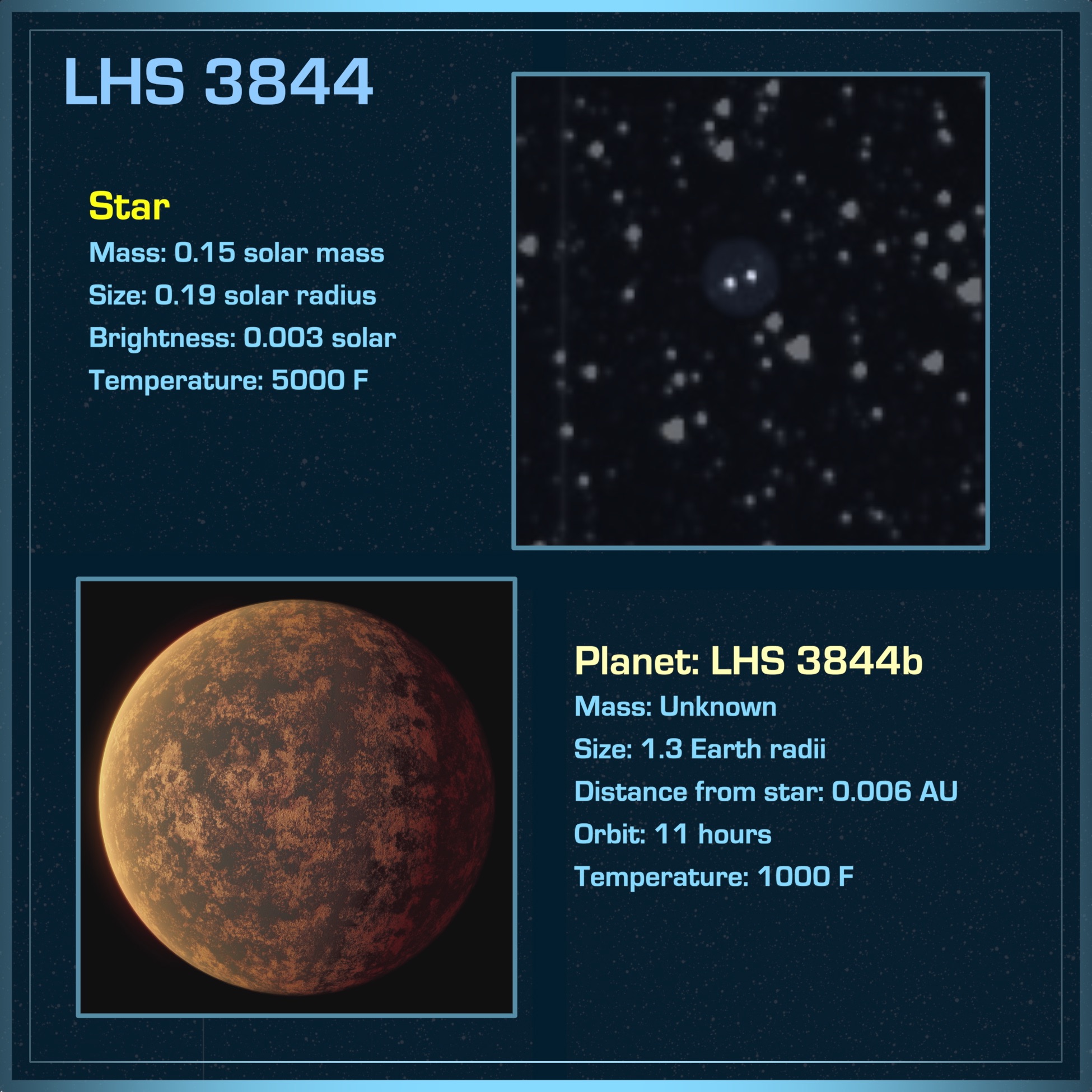Research


I study exoplanets around low mass stars with a particular interest in characterizing the surfaces and activity cycles of active M dwarfs. Starspots are ubiquitous on stars with convective outer layers and they complicate the background of exoplanet transit observations. Spectroscopic transit observations like the one simulated above contain a wealth of information about the stellar surface in the form of wavelength-dependent rotation amplitudes, changes in transit depth, and spot occultations.

Following the launch of TESS, I led a ground-based followup campaign using the Las Cumbres Observatory global network to confirm or rule out planet candidates. The first transit I observed was of ultra-short period M dwarf exoplanet LHS 3844b (Vanderspek+ 2019), which became the first rocky exoplanet found by TESS.
My observations have led or contributed to several other discoveries of M dwarf exoplanets like the nearby Earth-sized planet LP 791-18 d (Peterson+ 2023) and the earlier discovery of planets LP 791-18 b and c (Crossfield+ 2019), the TOI 2096 system (Pozuelos+ 2023), and the sub-Neptunes TOIs 122b and 237b (Waalkes+ 2021). Each of these worlds is a viable candidate for atmospheric characterization with current or near-future observational instruments.
Exoplanet atmospheres are difficult to detect and characterize, and one way to search for them is by looking for atmospheric outflow of hydrogen from sub-Neptune exoplanets that orbit close to active host stars. I looked for evidence of neutral hydrogen outflow from rocky exoplanet GJ 1132b (Berta+ 2013).
TOI 122b and TOI 237b, Two Small Warm Exoplanets Orbiting Inactive M Dwarfs Found by TESSLyα in the GJ 1132 System: Stellar Emission and Planetary Atmospheric Evolution
A temperate Earth-sized planet with tidal heating transiting an M6 star
A Super-Earth and Sub-Neptune Transiting the Late-type M Dwarf LP 791-18
Identification of carbon dioxide in an exoplanet atmosphere
A Low-mass, Pre-main-sequence Eclipsing Binary in the 40 Myr Columba Association-Fundamental Stellar Parameters and Modeling the Effect of Star Spots
TESS Discovery of an Ultra-short-period Planet around the Nearby M Dwarf LHS 3844
A super-Earth and a mini-Neptune near the 2:1 MMR straddling the radius valley around the nearby mid-M dwarf TOI-2096
TOI-269 b: an eccentric sub-Neptune transiting a M2 dwarf revisited with ExTrA
